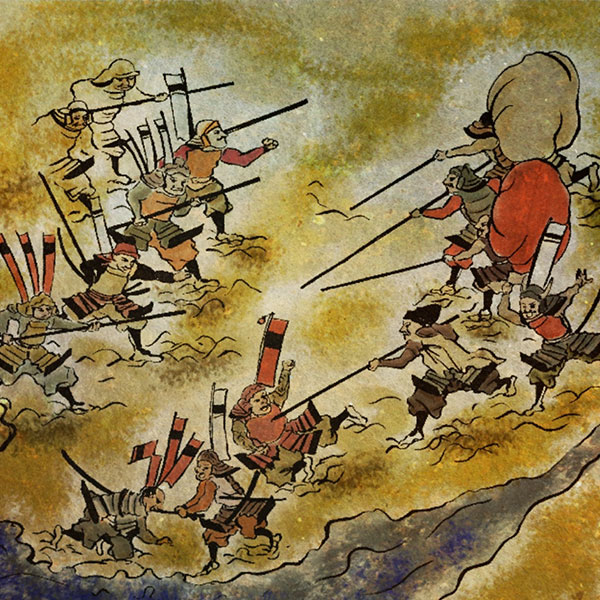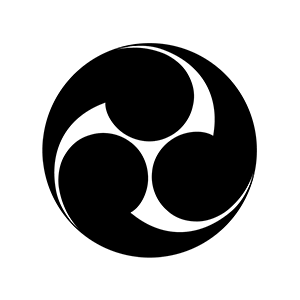- Kishiwada domainRuled southern Osaka and oversaw Kishu.
- The Kishiwada domain was a domain that owned Izumi Kuninami District and Hine District. During the Edo period, there were three castles in Osaka: Takatsuki Castle, Osaka Castle, and Kishiwada Castle.Osaka Castle was owned by the shogun himself, and Kishiwada Castle was founded by Nobukatsu Okabe, who is said to be the son of Tokugawa Ieyasu's sister.

Kishiwada CastleKishiwada City, Osaka Prefecture
- spring
- summer
- autumn
- winter
- TOP
- Kansai
- Osaka Prefecture
- Kishiwada Castle
| Other name | Kishi no Wada Castle, Teng Castle, Seki Kiri Castle, Chiki Kiri Castle |
|---|---|
| castle construction | Oei era (1394-1428) |
| address | 9-1 Kishijocho, Kishiwada City, Osaka Prefecture |
| telephone number | 072-431-3251 |
| Opening hours | 10:00-17:00 (Admission until 16:00) |
| closing day | Every Monday (excluding holidays), year-end and New Year holidays (December 29th to January 3rd) |
| Admission fee | Adults 300 yen / Junior high school students and under free |
- Access to Kishiwada Castle
- Approximately 7 minutes walk from Takojizo Station on the Nankai Main Line.
HISTORYKishiwada Castle, where famous military commanders stayed during the Sengoku period
Kishiwada Castle is a flat castle that existed in present-day Kishijo-cho, Kishiwada City, Osaka Prefecture.
Osaka Castle is famous when it comes to castles in Osaka Prefecture, but there was also a castle in Kishiwada, which functioned as the domain office of the Kishiwada clan, which housed Izumi Kuninami District and Hine District. Also, during the Sengoku period, it became a base for attacking Ishiyama Honganji Temple, and famous military commanders such as Oda Nobunaga stayed here. Let's unravel the history of Kishiwada Castle.
- Kishiwada Castle before the Edo period
- There is a record that around the 14th century, Osamu Kishiwada of the Southern Court, who served Masashige Kusunoki, developed Kishiwada and began to settle there. There is also a legend that a man named Takaie Wada, a nephew of Masashige Kusunoki, built the castle that became Kishiwada Castle, but there are no documents to support this and no remains have been found. From 2006 to 2007, an excavation survey of Kishiwada Castle, which is said to be the predecessor of Kishiwada Castle, was conducted, and it was discovered that the castle was built between the end of the 15th century and the beginning of the 16th century. .
In other words, the castle was built in Kishiwada in the late 1400s, nearly 100 years since the time when Takaie Wada was alive. In addition, there is a record that in 1500, Izumi Upper Governor Motoari Hosokawa and Izumi Lower Governor Masahisa Hosokawa were attacked by Naojun Hatakeyama and killed in Kishiwada Castle, so Kishiwada Old Castle was built around this time. It is speculated that it may have been done. The Izumi Shugo Hosokawa family is the family that became the shugo of the upper and lower halves of Izumi Province in 1408, and the Hosokawa clan was the shugodai from then on until the Oda clan ruled this area during the Sengoku period. There were repeated battles with the Matsuura clan over the land of Kishiwada.
At this time. It is believed that Kishiwada Castle grew in size through repeated additions. In the mid-16th century, Kishiwada was a key point for transportation from Shikoku, including Awa, Sanuki, and Awaji, to Settsu (present-day Osaka) and Kyoto, and the Miyoshi and Matsuura clans fought over control of Kishiwada. -The ownership of the castle changed frequently as the Hosokawa clan and others fought.
Then, in 1576, Oda Nobunaga attacked Ishiyama Hongan-ji Temple. The Mori clan, instructing the Oda clan, sent military provisions to Kaizuka by ship, and to stop this, Hikaru Matsuura, the lord of Kishiwada Castle at the time, joined forces with the Numa clan and the Terada clan to fight against this, but they formed the Izumi navy. , I was defeated. This was the First Battle of Kizugawaguchi. Two years later, in 1577, Oda Nobunaga, who destroyed Ishiyama Hongan-ji Temple, carried out the Kishu conquest and placed Oda Nobunari at Sano Fort to hold back the Kii area. Oda Nobunari moved to the Kishiwada Castle, became a subordinate of the Oda clan.
After Oda Nobunaga was killed in battle at Hongan-ji Temple, in 1583 Toyotomi Hideyoshi placed Kishiwada Castle under Kazuuji Nakamura and ordered him to subjugate the Negoro, Saiga, and Kokawa groups. In the 12th year of Tensho (1584), while Toyotomi Hideyoshi was on his way to the Battle of Komaki and Nagakute, the Negoro-shu, Saika-shu, and Kokawa-shu combined forces led a total of 30,000 soldiers and attacked Kishiwada Castle. I did.
At that time, Kazuuji Nakamura and Munekiyo Matsuura, who were in charge of the castle, defeated 30,000 soldiers with 8,000 soldiers. At this time, there is a legend that a monk riding an octopus and tens of millions of octopuses defeated the Kishu army, and even today, a temple called ``Tenshoji'' in Kishiwada enshrines the monk who appeared with the octopus at this time. I am collecting progress under the alias "Tako Jizo". Toyotomi Hideyoshi entered Kishiwada Castle in 1585 to pursue the combined forces of the Negoro, Saiga, and Kokawa clans, captured all the castles in Kaizuka, and pacified southern Osaka. Afterwards, Hideyoshi appointed his uncle Hidemasa Koide as the lord of Kishiwada Castle, and the castle was eventually increased to 30,000 koku. During this period, Kishiwada Castle was built at its current location, and the castle tower was also built. - Kishiwada Castle in the Edo period
- Kishiwada Castle was directly ruled by the Toyotomi clan, and in 1614, Matsudaira Shinkichi became the castle's lord during the Osaka Winter Siege, and later it was ruled by Hojo Ujishige, then by Koide Yoshihide, and by Genna 5 (1619). ) The castle owner changes frequently with Yasushige Matsudaira. Later, in 1631, Nobukatsu Okabe entered the castle from Takatsuki Castle, was given 60,000 koku, and became the lord of Kishiwada Castle. The Okabe clan served as the castle's lord for 13 generations until the Meiji era. There is also a theory that Nobukatsu Okabe entered the castle to monitor Kishu Castle.
Kishiwada Castle is located between Wakayama Castle and Osaka Castle, and the legend arose from the popular belief that Nobukatsu Okabe was the child of Tokugawa Ieyasu's sister, but the truth is not certain. - Kishiwada Castle after the Meiji era
- After the Meiji Restoration, almost all the buildings at Kishiwada Castle were demolished. The only remains of the pre-modern period that remain today are the dugouts and stone walls.
The castle ruins became a designated historic site of Osaka Prefecture in 1943, and the castle tower was rebuilt in 1958. The original plan was to restore the five-tiered castle tower, but due to a lack of funding, it was decided to restore the three-tiered castle tower.
Additionally, in 1957, gardener Mirei Shigemori created the Kishiwada Castle Garden (Hachijin Garden) on the ruins of the castle, which was designated as a national scenic spot on October 6, 2014. Ta. In addition, there is also a multi-purpose space called Ninomaru Park, which serves as a place for citizens to relax and hold various events.
Read about incidents related to Kishiwada Castle
- Kishu conquestOda Nobunaga/Toyotomi Hideyoshi vs. Saiga/Negoro
- What do you imagine when you think of "Kiokuni" during the Sengoku period? Kii Province is part of present-day Wakayama Prefecture and Mie Prefecture, but it is full of famous tourist spots such as Mt. Koya and Kumano Sanzan. The Saigashu, famous as the strongest gun mercenary group in the Sengoku period, is also here.

History of the Kishiwada clan, whose domain office is Kishiwada Castle
| Domain office | Kishiwada Castle |
|---|---|
| old area | Izumi Kuninami District/Hine District |
| stone height | 60,000 koku |
| Fudai/Tozama | Sotosama/Fudai |
| main lord | Koide family, Matsudaira family, Okabe family |
| Estimated population | 63,000 people (first year of the Meiji era) |













